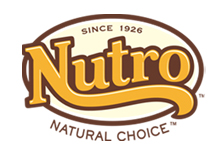Function Over Form: How to Get Creative with Your Content
Pet bloggers can utilize a variety of different content types in order to attract traffic. These range from basic blog posts, through to long-form content and even bigger content pieces such as infographics or interactive pieces or tools. These different content types can each serve different purposes and help pet bloggers generate more traffic, but it’s important to understand how to pick different content types and how each one can help you.
Before getting into the various content types, let’s first look at an important principle: “function over form.”
When coming up with content ideas, you shouldn’t start by saying “I want an infographic” or “I want an interactive piece of content”. The idea should come first, then you should decide what form that content should take which helps communicate the idea in the best way. This means that the form of the content is driven by the idea, not the other way around.
For example, if you have lots of really cool data and want to visualise it, an infographic or a series of infographics could work well. If, instead, you had an idea for a guide to help pet owners groom their dog, this idea is probably best communicated using mostly written content with supporting video, so a blog post or long form guide may be best.
Try to keep this principle in mind when coming up with content ideas and you’ll certainly save yourself a lot of time by not pursuing the wrong content type.
Let’s explore some content types. The list below is by no means exhaustive, but covers some of the most common options that could work really well for pet blogs.
Data led content to drive links and social shares
If you can research or gather some data that leads to an interesting story, this can allow you to create a cool piece of content that can generate links from other blogs to yours and also generate lots of Facebook and Twitter shares. One common way to do this is to run a survey of a group of people to ask questions that may lead to interesting answers.
The example below is taken from a piece that we recently worked on with a client. The original can be seen here in the form of an infographic (which you should totally share on your blog for Valentine’s Day) – http://www.canvasfactory.com/blog/valentines-day-pets/ – and includes data like this:
These kinds of stats can be really interesting to other pet owners and if they choose to use your graphics, then they may also link to your blog as the original source of the data which can send traffic and help you with your Google rankings.
Gathering the data can take time. You should only do it if you have time to do it properly, but it can work really well to drive awareness of your blog and bring new traffic that you wouldn’t have otherwise received.
Short blog posts to target keywords
I’m sure that most of you are aware of this already, but it’s worth reiterating and hopefully some of the tools below are useful and make your life a bit easier.
What we’re trying to do here is produce blog posts that are useful to your audience, but also stand a chance of ranking well in Google. It really doesn’t take very long to tweak your content to include a target keyword or two and the result could be much better Google rankings (and therefore traffic) for not a huge amount of work.
Here are a few ways you can find out which keywords to target.
Google keyword tool
The Google Keyword Tool allows you to see roughly how many times a set of keywords are searched for every month. This can be really useful because you can use it to find the keywords which are most likely to send the most traffic to you. Let’s say you wanted to write about training labradors, you’d simply insert the keyword into the tool here:
Then the results will look something like this:
You can then choose the keywords that work best for your content and have the highest number of searches. One note here: Some of these are likely to be competitive, so you should do a quick Google search for the keywords you choose and just check that you think you have a chance of ranking alongside the sites that are already there.
Google search results
Have you ever noticed that little section at the bottom of Google search results which looks like this?
This is Google trying to be helpful and show you related searches which help you find more information. These are driven partly by other keywords that people use which mean they are likely to be good keywords to target and can be good inspiration for you.
Listicles
Buzzfeed have really pushed this content type with huge lists such as this and this. Some people can get a little bored of them but the fact is that a well-researched, well-written listicle can perform really well in terms of social shares and traffic. The reason for this is that they are often very image led which means they’re pretty quick and easy to consume, particularly on a mobile device, which is how many of us discover content.
The key here is to do something that stands out from everyone else so that it doesn’t become just another list that no one reads. There are a few ways to make your post stand out:
- Make it a huge list so that it’s super comprehensive
- Get other people involved such as bloggers or experts in the topic you’re covering
- Use your own unique images or videos
There are various types of lists you can do too, here is some inspiration for you along with some examples:
- Top 100 bloggers – you could cover the top 100 pet bloggers in the world
- Top 100 hacks – the top 100 hacks for training puppies
- Top 100 photos – the top 100 cute brown labrador puppy photos
- Top 100 videos – top 100 videos of puppies being cute
- Top 100 blog posts – the top 100 blog posts from pet bloggers
Don’t worry too much about the number – focus on the quality of the list and see how many you can get to.
Summary
You don’t just need to stick to a few hundred words when writing your blog posts. Think about how to make things more exciting and engaging, and make your blog really stand out. It takes a bit more creativity but there’s inspiration everywhere and a whole community of other bloggers so why not reach out and start bouncing ideas around?
Matt Beswick is the co-founder of Aira (aira.net) and Pet365 (pet365.co.uk) and has worked in digital marketing for longer than he likes to remember. He has 3 dogs, and a young son who enjoys rolling around in their beds.
Image: Dasha Petrenko/Shutterstock.com








